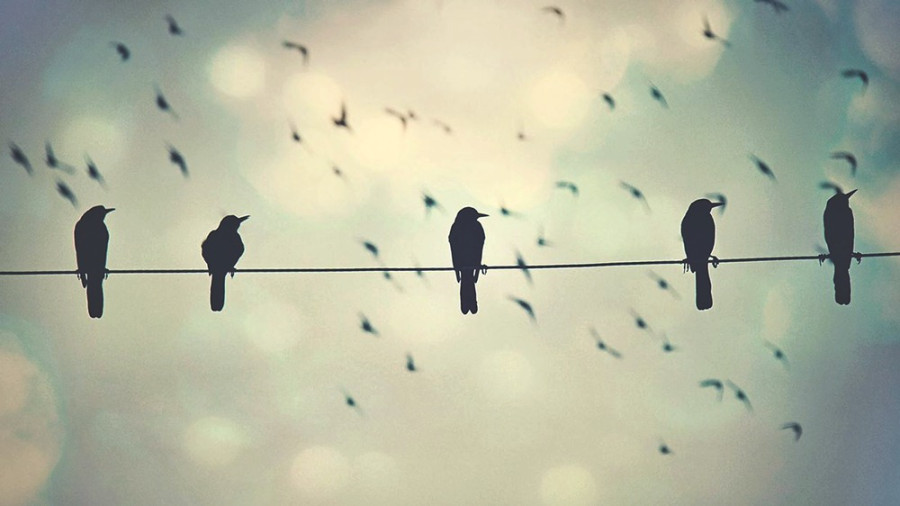Miscellaneous
Thar chai k ho?
Nobody wants to wake up in a cold winter morning and travel halfway through the city unless they have a class to attend, a job to do or, for those like myself, a hope of landing one after some effort.
Abhinawa Devkota
Nobody wants to wake up in a cold winter morning and travel halfway through the city unless they have a class to attend, a job to do or, for those like myself, a hope of landing one after some effort.
As warm summer days start giving way to cold, dark, foggy winter mornings, streets around the Putalisadak-Bagbazaar area are abuzz every morning with young crowds attending coaching centres to try their luck at government jobs. Widely known as lok sewa, the exams that lead to the jobs are a hard nut to crack, taking numerous attempts sometimes.
These preparation classes take place in one of the many dingy, multi-storied buildings jostling for every square inch of available land and constructed with space and profit in mind rather than those living and working inside it. I take a few flights of ill-lit stairs inside one of them and walk into what looks like an industrial operation, which in this case is a hall filled to the corners with benches and swarming with raucous humanity impatiently waiting for the instructor to arrive.
A pattern emerges before the class starts. Like microbes clumping together to form their own colonies, many settle down in their own small groups. You can discern them in the dim, bluish light of the fluorescent bulb: the Rais and Limbus here, Madheshis there. Tamang students in one corner, Bahun-Chhetri aspirants in the other. All of them separated from each other by narrow physical space but a mile-long cultural and social chasm. A handful of late arrivals squeeze uneasily into whatever space is left, inviting anxious glances from those already seated.
Birds of a feather flock together.
***
While walking out of the institute one day, I bump into a guy from my district. He puts his arm around my shoulders and we start talking about things back home.
“Kun gau? (Which village?)” I ask him, pretending to know the place I have visited only a few times in my life well.
Turns out, his village is not that far from mine.
“Thar ke ni? (Your caste?)” The question slips from my mouth with the expectation that I might even know some of his relatives.
“Ma ta kami ho (I am a kami),” he says, in a hushed tone with a nervous smile on his face, before hurriedly leaving with the promise of meeting again.
“Angalo chai hali halnu parne (Why did he have to touch you?),” a friend murmurs as we head to the bus station.
***
Mukherjee Nagar, in north Delhi, is the Putalisadak-Bagbazaar area taken to its logical limit, a site of pilgrimage for IAS (Indian Administrative Service, akin to our lok sewa) aspirants who spend years weaving through its narrow gullies and overcrowded streets, gathering around in its book and photocopy shops and attending one of its numerous institutions with the hope of cracking one of the toughest government service exams on the planet. It is not far from where I studied and saw many students from my university. On summer nights, after some of my friends were back from these institutes and dinner was served, we would gather around our hostel, complaining about temperature and mosquitoes, chattering about daily events and discussing our future plans. Like in the coaching classes, people in the university hostels often gravitated towards their own groups, which were roughly divided according to states and subdivided according to the students’ caste and ethnicity.
“The system is invariably rigged in favour of the Brahmin-Baniyas,” one would say, while trying to stay out of the earshot of his fellow higher-caste friends.
“Doesn’t matter how hard you work, they get the most number of seats. Feel like kicking all the pandits out,” another frustrated student would murmur, inviting nods of approval from his friends.
“Arrey Devkota, tu bhi to pandit hai (You are also a Brahmin, Devkota),” another would quip, and all of us would burst into peals of laughter.
In spite of my caste, it must have been my position as an outsider and a pahadi, a person from the hills (the hill-plain discrimination dynamics often works the opposite way in India where people living in its northern hills feel discriminated by those living below), that made them accept me as part of their group.
***
If, despite all the political and economic advancements we have made and all the corrective measures we have taken, fissures along caste and racial lines still run deep and wide in the subcontinent with even the well-educated among us becoming its perpetrators or victims, then solving it requires more than just passing new laws and framing new policies. It requires us to better engage with one another and have empathy for those different from us. One can argue, and there is a grain of truth in it, that shared values and culture lead to better communication closer connections. But one cannot deny that they sometimes end up worsening the discrimination even more.
Having a grudge against the Dalits and racial minorities won’t make us any superior, neither will kicking all the Brahmins out solve the problem. They only show our ignorance about one another. This ignorance will remain as long as we don’t bridge the communication gap. The discrimination will persist as long as we don’t think of others as one of us.




 10.12°C Kathmandu
10.12°C Kathmandu










